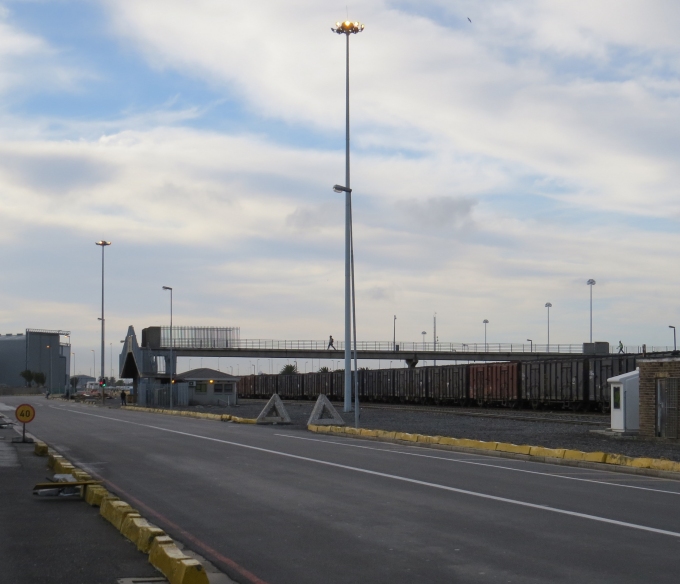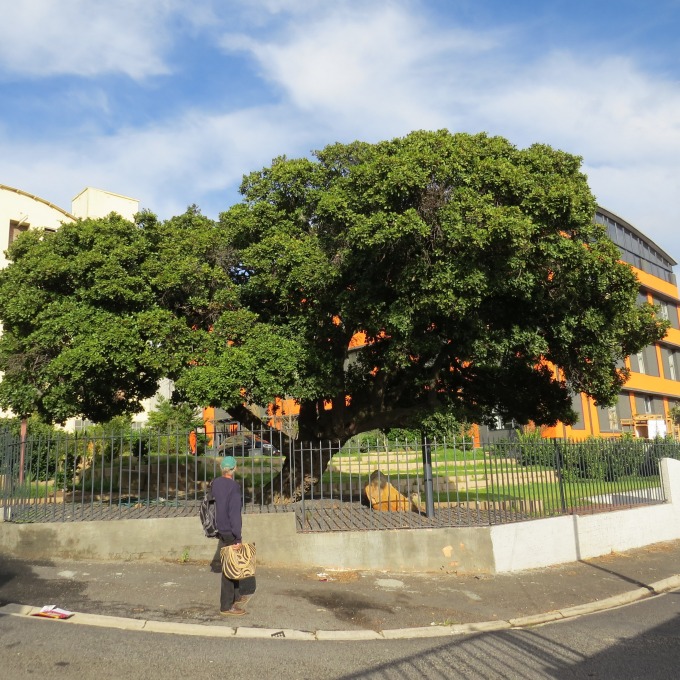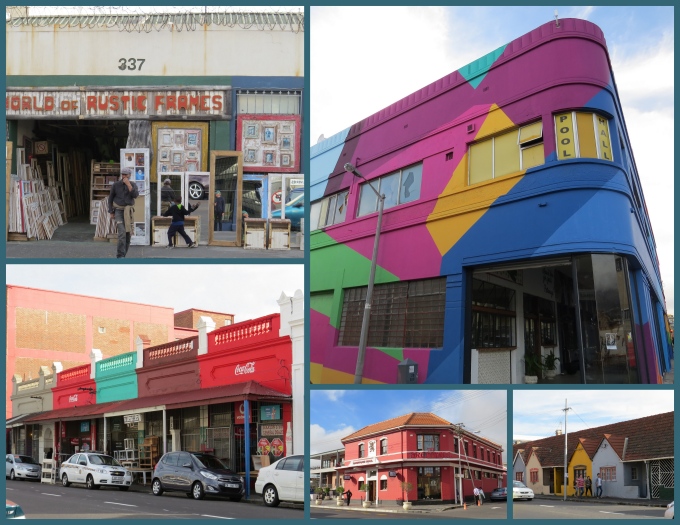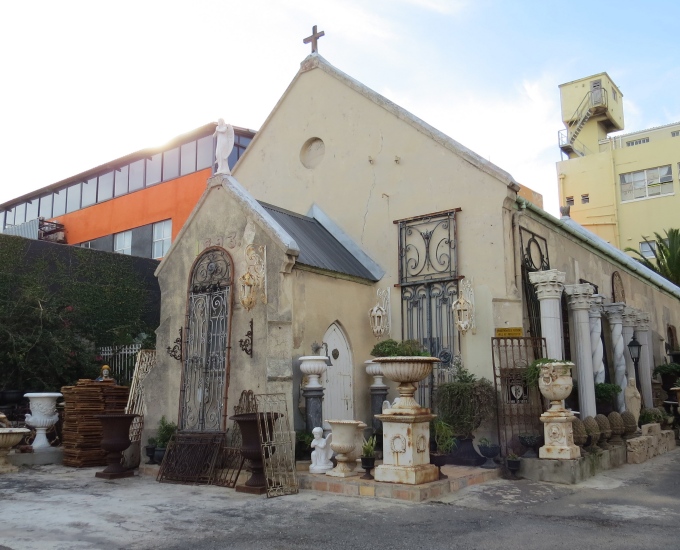Woodstock - A Trendy, Authentic Suburb
/After visiting the Old Biscuit Mill, I wanted to learn more about the history of the Woodstock. Located at the base of Devil's Peak and not far from Table Bay, Woodstock used to be a beachside community until the 1930-1940s when the land was “reclaimed” from the bay to construct Duncan Docks (the port and marina area) and the foreshore. Like most of Cape Town, the wind rips through frequently, hence the local's nickname of Windsock rather than Woodstock. We thought it odd when we spotted the Beach Road sign, but then, of course, less than a century ago, that made sense.

Unlike many areas of Cape Town, Woodstock escaped the effects of the Group Areas Act of the apartheid years and thus, always remained a racially mixed suburb. It has its rough spots and a definite industrial bend, but gentrification is certainly morphing the area into an interesting kind of place. We walked from the marina past the not-very-scenic container docks and over the N1 highway via a Customs turnstyle and a pedestrian overpass. Once on the other side of the highway, we were in the thick of the industrial area with narrow, uneven streets and huge stone and brick factory mills surrounding us. A short, circuitous walk led us to a set of metal stairs over the railroad tracks and then down again. We could see the train tracks below and the traffic on Albert Road just up ahead of us.
Woodstock was originally known as Papendorp, named after a Dutchman, Pieter van Papendorp who owned the land. The Battle of Blaauwberg (Blue Mountain) was fought nearby between the British and the Dutch and a treaty was signed in 1806 under an old milkwood tree, beginning the second British occupation of the Cape Colony. On Treaty Road, we found the old, gnarled milkwood, known as the Treaty Tree. “It’s not exactly clear how old the milkwood tree is, but some say it was a landmark for Portuguese sailors in the days before the Dutch landed at the Cape in 1652 ...What is more certain is that slaves were sold under its shade (and sometimes hanged from it).” Though it's fenced in and considered a National Heritage Site, sadly, there are are no markers or plaques describing its place in history. It's just an old tree that's seen a lot of Cape Town's history.
Definitely more prominent than its hidden history is Woodstock's street art. Midst the tagging and graffiti, we found amazing artwork done on the sides of Woodstock's rather derelict buildings. Woodstock is known for its artists' residences and studios, but here artwork is not just relegated to galleries … it's everywhere. Local resident and artist, Freddy Sam, started this beautification project and several other local artists, as well as artists from around the world have pitched in. I'd like to return to this area if we have a chance and just wander around finding more street art to photograph.
We wandered past old factory buildings and one in particular caught our attention. The Cape Bag Depot advertised a factory store offering Hessian (??) and the door was open. How could we resist? There were burlap (Hessian cloth in South Africa) bags of every color and size, as well as screen-printed bags and fabric on display. Tiny bags and huge grain sacks. Jute twine and rafia filled bins. Heavy rope was coiled on the floor at the back of the no-nonsense factory showroom. I picked out a zebra bag for R32 (about $3US) and saw the same bag later at a V&A shop for R320 ($30US) … quite a mark-up or, in my case, quite the bargain.
Albert Road is lined with tiny, brightly colored row houses and little shops. Some shops are chichi, interspersed with basic convenience stores and cheap stuff. Dilapidated buildings alternate with restored ones. Vehicle traffic is heavy and congested on the two-lane street. Cars are parked haphazardly wherever they can fit (or not). The sidewalks are narrow and sometimes nearly non-existent with shopkeeper's wares, buskers and crumbled pavement taking up walking space. Pedestrians walk at their own risk, spilling over into the street as necessary.
There are also several antique shops along the route. In particular, Delos Antiques was interesting. Housed in old St. Mary's School, this shop specializes in chandeliers and architectural items. Though we didn't venture inside (maybe next time), the outside yard was filled with all sorts of bric-a-brac and big, cool stuff that definitely wouldn't fit on a boat.
I'm hoping we get a chance to return to this quirky little suburb and do some more exploring. Extracting David from the boat and the chainplate issues and the varnishing isn't easy, but once in awhile it's a healthy thing … for both of us.







